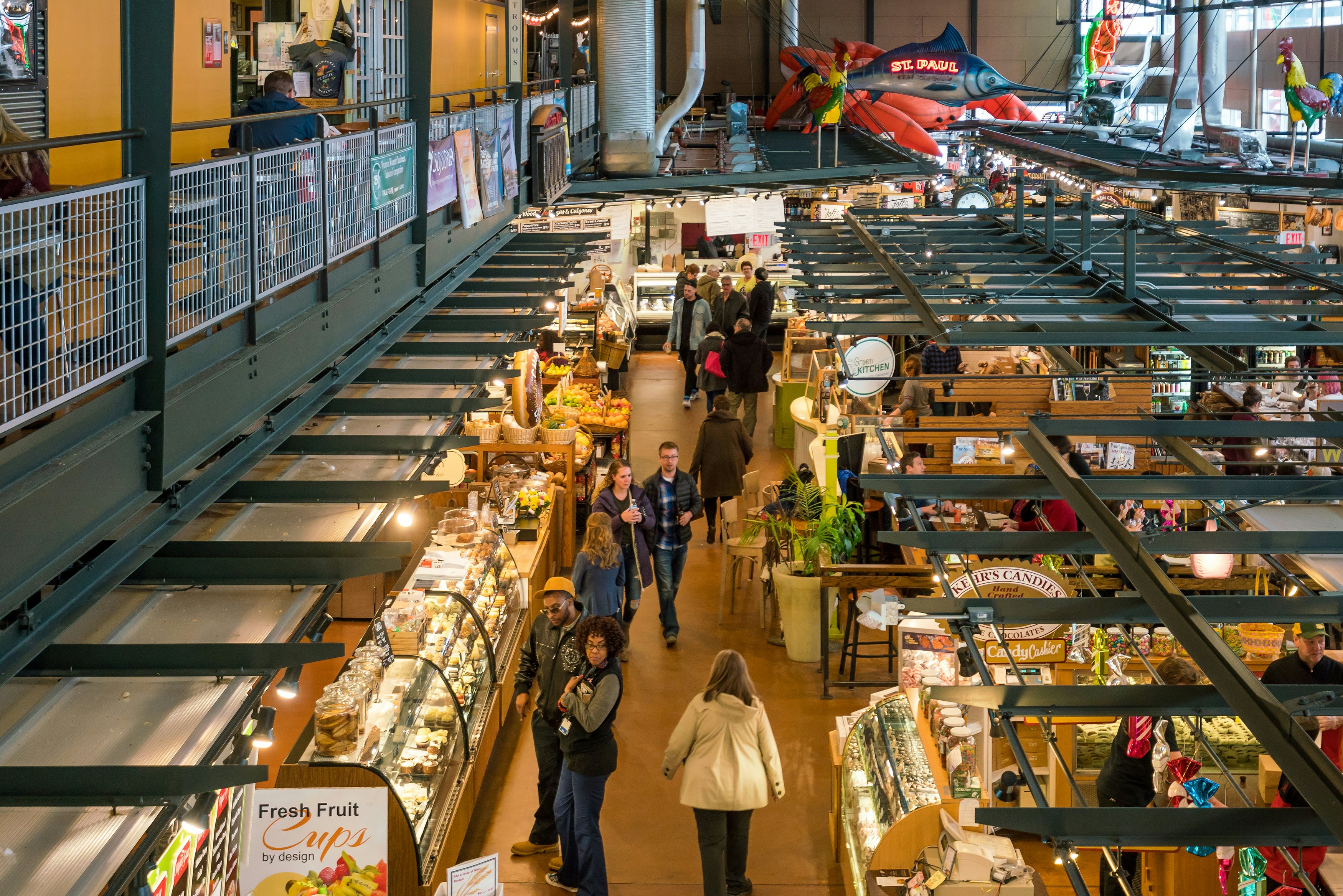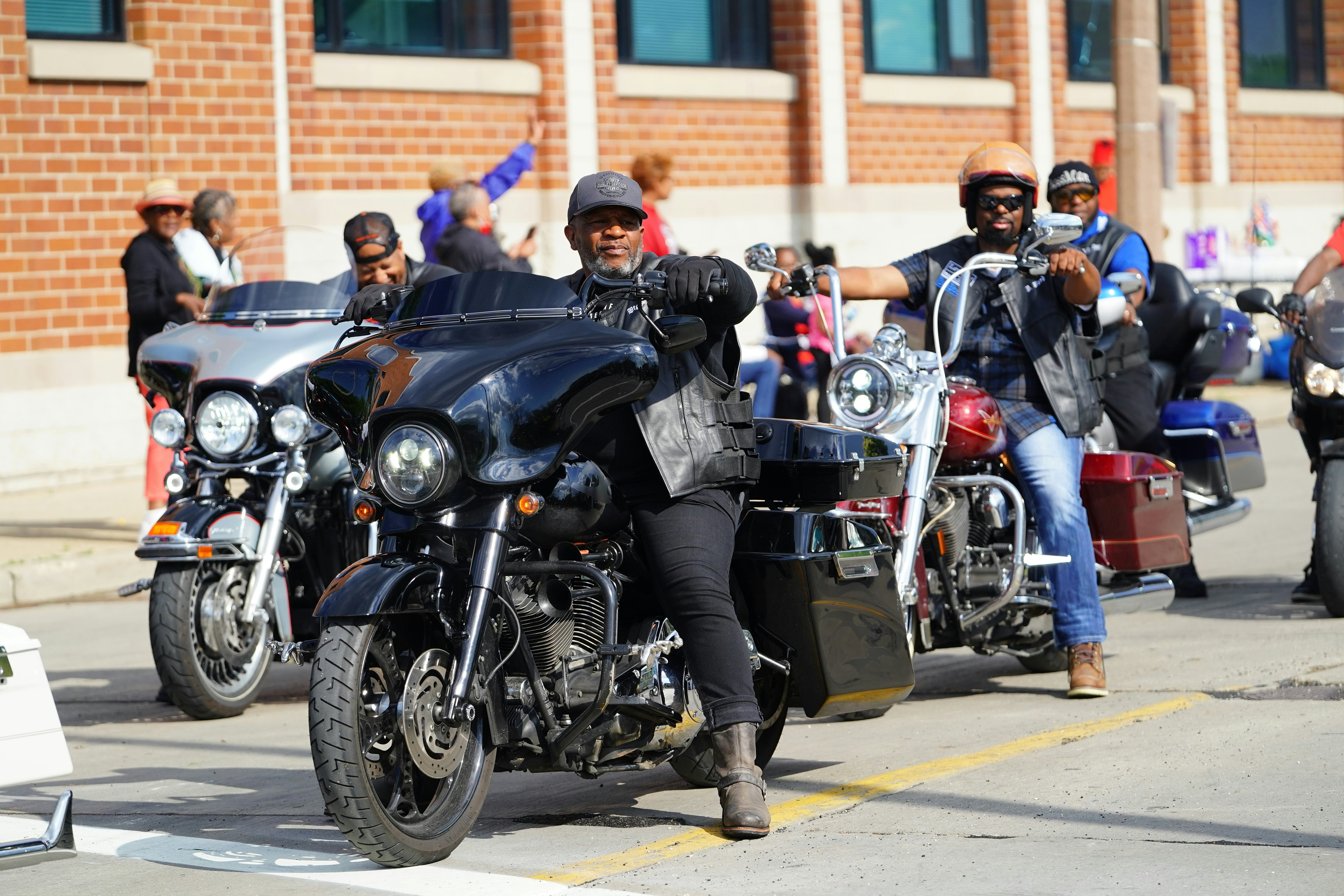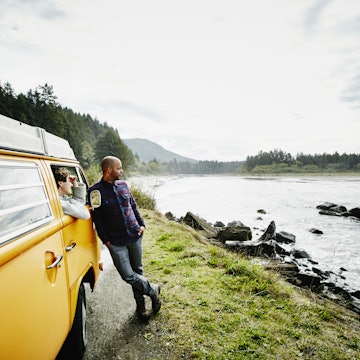

Living the motorcycling dream at Milwaukee's Harley Davidson museum © Erik Tanghe / Shutterstock
There's a growing buzz about Milwaukee, thanks to its cool museums and craft beer culture, but the city is large and spread out, so if you want to explore every corner, you’ll need a car, be it a rideshare or rental. That said, the neighborhoods with the most attractions and accommodations are walkable and bikeable, so it’s possible to plan a completely car-free adventure.
If you’re happy to stick to exploring downtown, public transport (and a bit of foot power) may be all that you need. Here are the best ways to get around Milwaukee.

How to get around Milwaukee without a car
Renting a car is far from mandatory in Milwaukee. Many neighborhoods are walkable and bikeable, and if you want to explore areas farther out, you can easily catch a rideshare to get there.
If you’re going to visit Milwaukee without a car, you’ll want to base yourself in a neighborhood that has lots of local attractions, such as downtown, or a neighborhood with great restaurants, bars, theaters and shops within walking distance, such as Bay View, Westown or the East Side.
Fortunately, all these neighborhoods are served by the MCTS bus service and the Bublr bike share system, making getting around a breeze. For a completely car-free experience, catch the Amtrak train or Greyhound bus to Milwaukee and stay downtown. so you can walk, bike, streetcar or bus it just about anywhere.
Car
Unless you plan to spend a lot of time in the suburbs and beyond, you can get by without a car in Milwaukee. Should you decide to rent a car, stay somewhere with on-site parking as the rules for street parking are convoluted and complex.
When driving in town, be mindful of parking signs, as some streets allow unlimited free parking while others only permit time-limited free parking or require you to pay. Overnight parking on the street is barred from 2am to 6am Monday to Saturday, unless you have permission from the city authorities.
In winter, from December to March, additional rules apply, with alternate side parking enforced to allow snow plows to pass through. The city website has full details, including instructions for obtaining temporary permission to park overnight.
Traffic congestion is usually limited to workday rush hours (Monday to Friday between 7am and 10am and 4pm to 7pm) and mostly affects the major highways cutting across, around and through town.

Taxi
Do taxis exist in Milwaukee? Yes. Are they a practical way to get around? No. Aside from the airport and Amtrak station, you’re unlikely to find an idle cab waiting to ferry you off to your next destination, so don’t bank on being able to use cabs to zip around like you can in Chicago or New York.
If you arrive by plane or train, hailing a cab to your digs is certainly possible, but for pick-ups and short trips around the city, rideshares, such as Uber or Lyft, are far more practical.
Rideshare
Uber and Lyft are widely used in Milwaukee and are great options for getting around in town. As well as transfers around the center, both companies can pick you up at the Amtrak train station or at Milwaukee’s Mitchell International Airport, which has a well-marked rideshare waiting area.
Bus
The Milwaukee County Transit System (MCTS) has dozens of bus routes running right across the city. The MCTS website and Ride MCTS mobile app have a useful trip-planning tool that makes it easy to plan your ride around town. Route 80 and the GreenLine connect Milwaukee Mitchell International Airport with downtown, with services every 15 minutes or so throughout the day.
If you’re planning a short visit to Milwaukee, download the Ride MCTS app (available for Apple and Android) and buy an e-ticket. A 90-minute ticket costs $2, and a 24-hour unlimited ride ticket costs $5. If you don’t want to use the app, you can pay cash ($2.25 per ride) when you board the bus – just make sure to bring the exact amount because bus drivers aren't able to give change.
If you’re planning a long-term visit, consider buying an M-CARD. Cards can be loaded with credit for individual rides, or passes for unlimited bus travel for seven or 31 days. M-CARD vending machines can be found in the airport baggage claim area and also at 120 retailers around the city, including at Pick n’ Save grocery stores.
The Hop Streetcar
Who doesn’t love a streetcar? In Milwaukee, not only is the Hop Streetcar a convenient way to get around downtown, it’s also a genuinely fun way to see the city. The Hop runs right through downtown Milwaukee and gets you close to Cathedral Square Park, Pabst Theater, Milwaukee Public Market and the Milwaukee RiverWalk, among other attractions.
Best of all, the service is completely free, and streetcars run every 15 minutes during peak hours and every 20 minutes at weekends and off-peak times. The Hop runs from 5am to midnight Monday to Friday, from 7am to midnight Saturday, and from 7am to 10pm Sunday.

Bicycle
Though the majority of Milwaukee residents get around by car, cycling is becoming a popular leisure pastime, and much of the city is connected by bike lanes. Should you wish to explore the city on two wheels, you can rent a bike from a handful of bike shops (try Milwaukee by Bike downtown or Wheel Fun near the lakefront).
Ask about renting a lock if this isn’t included in the rental, as bike crime is not unheard of in Milwaukee. Google Maps gives decent directions for cyclists, but it’s a good idea to check out the bike maps on the city website; some are downloadable, others are interactive digital maps. Be sure to check out the Oak Leaf Trail system, a network of 135 miles of paved, car-free trails that go from the city center out to rural areas beyond the suburbs.
If bike share is more your style, take advantage of the Bublr bike share program. The bikes are heavy and a bit clunky, but you can ride and drop the bike without having to carry a lock. Named after the everyday drinking fountains that Wisconsinites call “bubblers,” these baby blue bikes are fine for short hops around the city.
You’ll find bike stations as far west as Mayfair Road and as far north as Estabrook Park, but most are located downtown and in the surrounding neighborhoods of Walker’s Point, Bay View, Westown and the Lower to Upper East Side. A single ride costs 25 cents per minute, or you can buy a 24-hour pass for $24. There’s also a 30-day pass, but it’s a membership plan best suited for residents, not visitors.
Accessible transportation in Milwaukee
Milwaukee’s entire bus service fleet is fully accessible for wheelchair users, as is the Amtrak station and all trains arriving in and departing from Milwaukee. The Hop Streetcar and streetcar platforms are also fully wheelchair accessible, and the Bublr bike share program was the first bike share system in the country to introduce adaptive bikes into the fleet. Bublr’s adaptable bicycles include upright tricycles, side-by-side bikes and hand cycles that can be checked in and out of any Bublr docking station. Travelers with physical and cognitive challenges can also turn to Tootl, an accessible transportation service around Milwaukee and surrounding counties.
Travelers with disabilities can find detailed information on transportation, accommodations and activity options on the city government’s Accessibility in Milwaukee page. Find out more information on Lonely Planet’s accessible travel resources page.
You may also like:
Exploring Milwaukee's best city parks
10 must-do things on your trip to Milwaukee
From Summerfest to winter surfing, Milwaukee has plenty to do all year
















